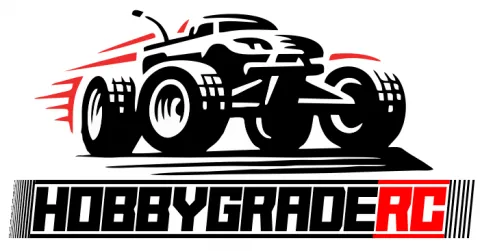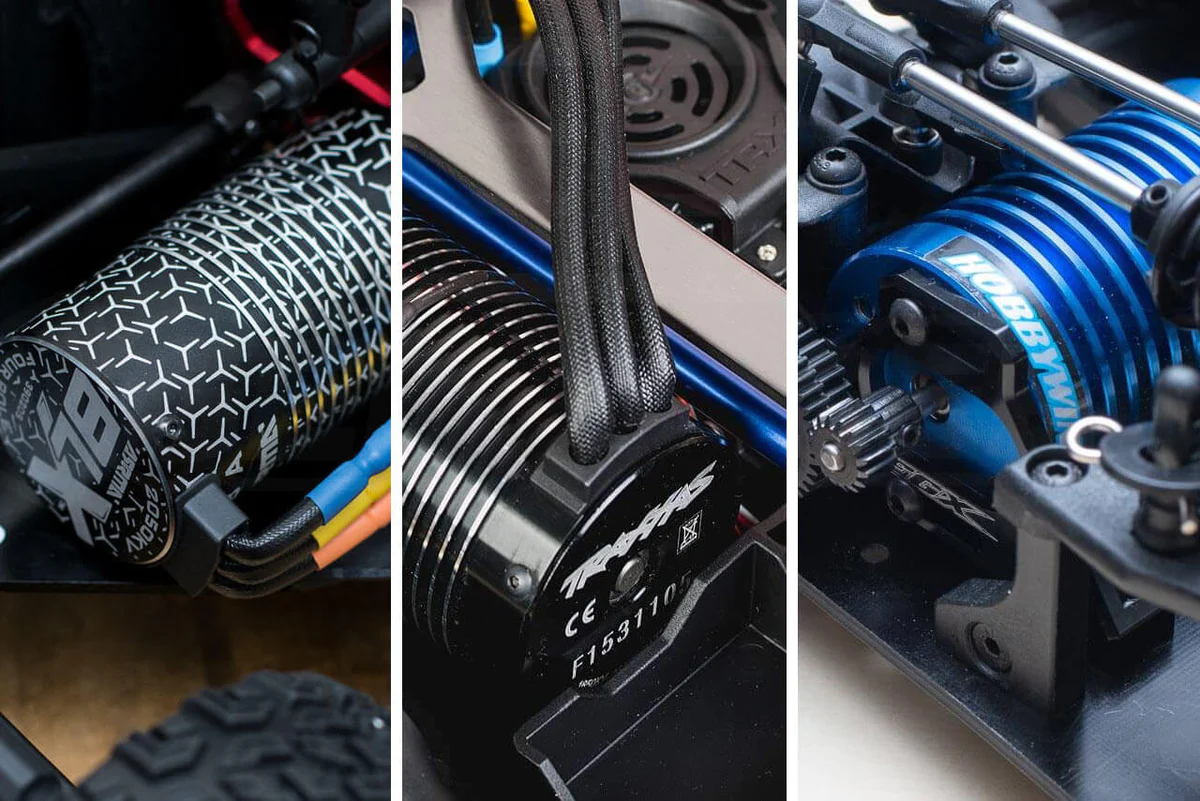Brushless motors have been a game-changer in the world of RC cars. They offer superior performance, efficiency, and reliability compared to their brushed counterparts. Brushless motors are electronically commutated motors that are powered by a supply of DC energy from a battery pack. They are constructed differently than brushed motors, with the windings located on the stator instead of the rotor, and the magnets placed on the rotor.
Brushless motors have become increasingly popular in the RC car community due to their numerous advantages. They offer higher power output, longer lifespan, and less maintenance compared to brushed motors. Brushless motors are also more efficient, meaning they can provide more power while using less energy. This translates to longer run times and better overall performance.
Understanding the basics of brushless motors is crucial for anyone looking to get into the world of RC cars. This article will provide an in-depth guide to brushless motors, covering everything from their construction and operation to their advantages and disadvantages. Whether you’re a seasoned RC car enthusiast or a newcomer to the hobby, this guide will provide you with the knowledge you need to make informed decisions when it comes to choosing and using brushless motors for your RC cars.
Table of Contents
What are Brushless Motors for RC Cars?
Brushless motors are a type of electric motor that have become increasingly popular in the world of remote control (RC) cars. They are a more advanced and efficient alternative to traditional brushed motors, which have been used in RC cars for many years.
How Do Brushless Motors Work?
Brushless motors work by using electronic controllers to switch the current flow to the motor windings. The controller uses sensors to detect the position of the rotor and then adjusts the current flow to the windings to keep the rotor turning smoothly. This process is called electronic commutation, and it eliminates the need for brushes, which are used in brushed motors to switch the current flow to the windings.
Advantages of Brushless Motors over Brushed Motors
There are several advantages to using brushless motors over traditional brushed motors in RC cars. One major advantage is that brushless motors are more efficient, which means they can provide more power and speed while using less energy. They are also more reliable and durable, since they have fewer moving parts and are less prone to wear and tear.
Another advantage of brushless motors is that they can be more precise and responsive than brushed motors. This is because the electronic commutation process allows for more precise control over the motor’s speed and torque, which can be important in certain types of RC car racing.
Types of Brushless Motors for RC Cars
There are several types of brushless motors that are commonly used in RC cars. These include inrunner motors, outrunner motors, and axial-flux motors. Inrunner motors are typically used in smaller RC cars, while outrunner motors are used in larger cars and trucks. Axial-flux motors are a newer type of brushless motor that are becoming more popular due to their high power-to-weight ratio and compact size.
Overall, brushless motors are a significant advancement in RC car technology, providing greater efficiency, reliability, and precision than traditional brushed motors. As a result, they have become the motor of choice for many RC car enthusiasts and racers.
Factors to Consider When Choosing Brushless Motors for RC Cars
Size and Weight
One of the most important factors to consider when choosing a brushless motor for an RC car is the size and weight of the motor. Larger motors with more windings and higher voltage ratings generally provide more power and torque, but they also tend to be heavier and more expensive. Lighter motors may sacrifice some power, but they can be more efficient and easier to control.
It’s important to choose a motor that is compatible with the size and weight of the RC car. A motor that is too large or heavy can negatively impact the handling and performance of the car, while a motor that is too small may not provide enough power to properly drive the car.
KV Rating
Another important factor to consider when choosing a brushless motor for an RC car is the KV rating. The KV rating indicates the number of revolutions per minute (RPM) that the motor will turn for every volt of electricity that is applied to it. Motors with higher KV ratings will generally provide more speed, while motors with lower KV ratings will provide more torque.
It’s important to choose a motor with a KV rating that is appropriate for the type of RC car and driving conditions. For example, a motor with a high KV rating may be more suitable for a car that is designed for racing, while a motor with a lower KV rating may be better for a car that is designed for off-road use.
Number of Poles
The number of poles in a brushless motor refers to the number of magnetic poles in the rotor. Motors with more poles tend to be more efficient and provide more torque, while motors with fewer poles tend to be less efficient but provide more speed.
It’s important to choose a motor with the appropriate number of poles for the type of RC car and driving conditions. For example, a motor with more poles may be more suitable for a car that is designed for off-road use, while a motor with fewer poles may be better for a car that is designed for racing.
Power and Efficiency
Finally, it’s important to consider the power and efficiency of the brushless motor. Motors that are more powerful will generally provide better acceleration and top speed, but they may also be less efficient and have a shorter lifespan. Motors that are more efficient will generally provide longer run times and require less maintenance, but they may sacrifice some power and speed.
When choosing a motor, it’s important to find a balance between power and efficiency that is appropriate for the type of RC car and driving conditions. A motor that is too powerful may drain the battery quickly and require frequent maintenance, while a motor that is too efficient may sacrifice too much power and speed.
Installation and Maintenance of Brushless Motors for RC Cars
Mounting the Motor
Mounting the brushless motor onto the chassis is the first step in installation. It is important to place it in the same location as the old motor if there is enough room. Most brushless motors come with mounting screws and washers. Make sure to use the appropriate size screws and washers to secure the motor to the chassis. It is also important to ensure that the motor is properly aligned with the drivetrain to avoid any binding or damage.
Wiring the Motor
Wiring the brushless motor to the electronic speed control (ESC) is the next step in installation. Make sure to follow the manufacturer’s instructions carefully when wiring the motor to the ESC. It is important to use the correct gauge wire and connectors to ensure proper current flow and avoid any overheating or damage. It is also important to double-check all connections before powering up the system.
Programming the ESC
Programming the ESC is an important step in ensuring optimal performance from the brushless motor. Most ESCs come with pre-set programming options, but it is recommended to adjust the settings to suit the specific motor and driving style. The programming options may include throttle response, brake force, and motor timing. It is important to read the manufacturer’s instructions carefully when programming the ESC to avoid any damage or malfunction.
Maintenance Tips
Proper maintenance is crucial in ensuring the longevity and optimal performance of the brushless motor. Regular cleaning of the motor and ESC is recommended to remove any debris or dirt that may accumulate during use. It is also important to check the motor bearings and replace them if needed. Additionally, it is important to regularly check the wiring connections and connectors for any signs of wear or damage. Finally, it is recommended to periodically reprogram the ESC to adjust for any changes in the motor or driving style. Overall, proper installation and maintenance of brushless motors for RC cars can help ensure optimal performance and longevity of the system. By following the manufacturer’s instructions carefully and performing regular maintenance, RC car enthusiasts can enjoy the full potential of their brushless motor system.
Conclusion
Brushless motors are an excellent upgrade for RC cars, providing more power, speed, and efficiency than brushed motors. They are also more reliable and have longer lifespans, making them a smart investment for serious hobbyists. Understanding the specifications of brushless motors, such as the physical size and Kv rating, is crucial when selecting the right motor for your needs.
When it comes to selecting a brushless motor, there are several factors to consider, including the type of vehicle you have, the terrain you’ll be driving on, and your skill level. It’s important to choose a motor that can handle the demands of your vehicle and driving style, without sacrificing performance or reliability.
Additionally, it’s important to properly maintain your brushless motor to ensure it continues to perform at its best. This includes regularly cleaning and inspecting the motor, as well as properly lubricating the bearings and gears. With proper care and maintenance, a brushless motor can provide years of reliable performance and enjoyment.
Overall, brushless motors are a must-have upgrade for serious RC car enthusiasts. With their superior performance, reliability, and efficiency, they offer a significant improvement over brushed motors. By understanding the specifications and selecting the right motor for your needs, as well as properly maintaining it, you can enjoy the full benefits of this advanced technology.

